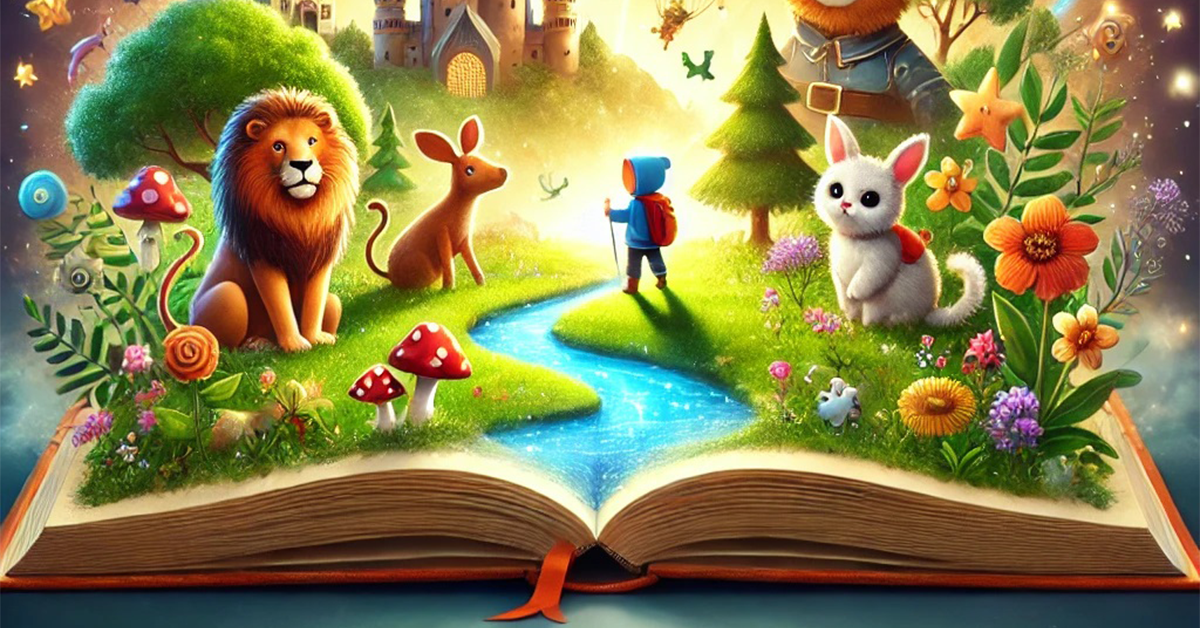How to Publish Your Own Children’s Book: A Step-by-Step Guide for Aspiring Authors
Introduction
Imagine holding a beautifully illustrated book in your hands, one that you wrote—a story that sparks a child’s imagination and leaves a lasting impression. Every great children’s book starts as an idea in someone’s mind. But too often, aspiring authors hesitate to take the next step, feeling overwhelmed by the publishing process.
The good news? You don’t need to be a big-name author or have insider connections to publish your own story for kids. With the rise of E-book publishing and self-publishing platforms like Kindle Direct Publishing (KDP), getting your book out to the world has never been easier.
In this guide, we’ll walk you through the entire process—from writing and editing to illustrating, formatting, publishing, and marketing. By the end, you’ll have a clear roadmap to turn your dream into reality.
Step 1: Writing a Captivating Children’s Story
Understanding Your Audience
Before writing, determine who your book is for. Children’s books come in different age categories:
- Picture books (Ages 3-7) – Short stories with illustrations on every page.
- Early readers (Ages 5-9) – Simple chapters with more text and fewer pictures.
- Chapter books (Ages 7-12) – Longer stories with engaging characters and more complex plots.
Understanding your audience will help you create age-appropriate themes and storytelling techniques that resonate.
Developing an Engaging Story
A great children’s book has:
- Lovable characters – Kids should relate to or be inspired by your characters.
- A simple yet powerful plot – Keep it engaging and easy to follow.
- Rhythm, rhyme, and repetition (if applicable) – These elements make your story fun to read aloud.
- A strong beginning, middle, and end – A well-structured story keeps children engaged.
Refining Your Manuscript
- Read your story out loud – This helps with pacing and readability.
- Seek feedback – Share your story with parents, teachers, or kids for honest opinions.
- Revise for clarity – Ensure your language is simple, engaging, and appropriate for your target age group.
Step 2: Editing and Polishing Your Book
Hiring a Professional Editor vs. Self-Editing
Even the best writers need editors. Consider:
- Developmental editing – Strengthens characters and storyline.
- Copyediting – Fixes grammar and readability.
- Proofreading – Eliminates any final errors.
Beta Readers and Peer Reviews
Find test readers in online writing communities or local groups. Their feedback can help improve your book before publication.
Step 3: Finding the Right Illustrator
Why Illustrations Matter
Children’s books are highly visual, making illustrations just as important as the story itself.
Hiring an Illustrator
You can find illustrators on platforms like Upwork, Fiverr, Behance, and Instagram. Look for a portfolio that matches your vision, discuss timelines, and agree on pricing before signing a contract.
DIY Illustration Options
If hiring an illustrator isn’t within your budget, tools like Procreate, Adobe Illustrator, and Canva can help you create your own illustrations. Some authors explore AI-generated artwork, but this comes with creative and ethical considerations.
Step 4: Formatting and Designing Your Book
Book Layout and Design
- Choose the right trim size and layout.
- Position text and images for maximum readability.
- Use tools like Adobe InDesign or KDP Kids’ Book Creator for formatting.
Cover Design and Its Importance
Your book cover is the first impression. You can design it yourself or hire a professional. Make sure it’s visually appealing and relevant to your story.
Step 5: Choosing a Publishing Route
Self-Publishing vs. Traditional Publishing
- Self-publishing offers full control, higher royalties, and faster publishing.
- Traditional publishing provides editorial support and distribution but requires literary agents and a long submission process.
How to Publish on Kindle Direct Publishing (KDP)
- Sign up for a KDP account.
- Upload your formatted manuscript and cover.
- Set pricing and distribution options.
- Publish your book and start selling!
Other Self-Publishing Platforms
Consider IngramSpark, Lulu, BookBaby, and Apple Books as alternative self-publishing options.
How to Submit to Traditional Publishers
- Write a compelling query letter.
- Research and submit to book publishers in Dallas, Texas, and other reputable publishing houses.
Step 6: Marketing and Promoting Your Children’s Book
Building an Author Platform
- Create an author website to showcase your work.
- Engage on social media (Instagram, TikTok, Facebook groups).
- Grow an email list to connect with readers.
Selling on Amazon and Other Platforms
- Optimize your book for Amazon SEO using relevant keywords.
- Enroll in Kindle Unlimited or KDP Select to increase exposure.
Getting Reviews and Exposure
- Request reviews from parents, bloggers, and educators.
- Leverage book launch teams and giveaways to boost initial sales.
Offline Marketing Strategies
- Organize book readings at schools and libraries.
- Attend book fairs and author events.
- Partner with publishing houses in Dallas and literacy programs.
Conclusion
Publishing a children’s book might seem like a daunting task, but with the right steps, it’s completely achievable. Whether you self-publish or go the traditional route, your story deserves to be heard. Take the first step today and bring your book to life!
For expert E-book publishing services, check out publishing companies that can help turn your dream into reality.
Happy writing and publishing!
















